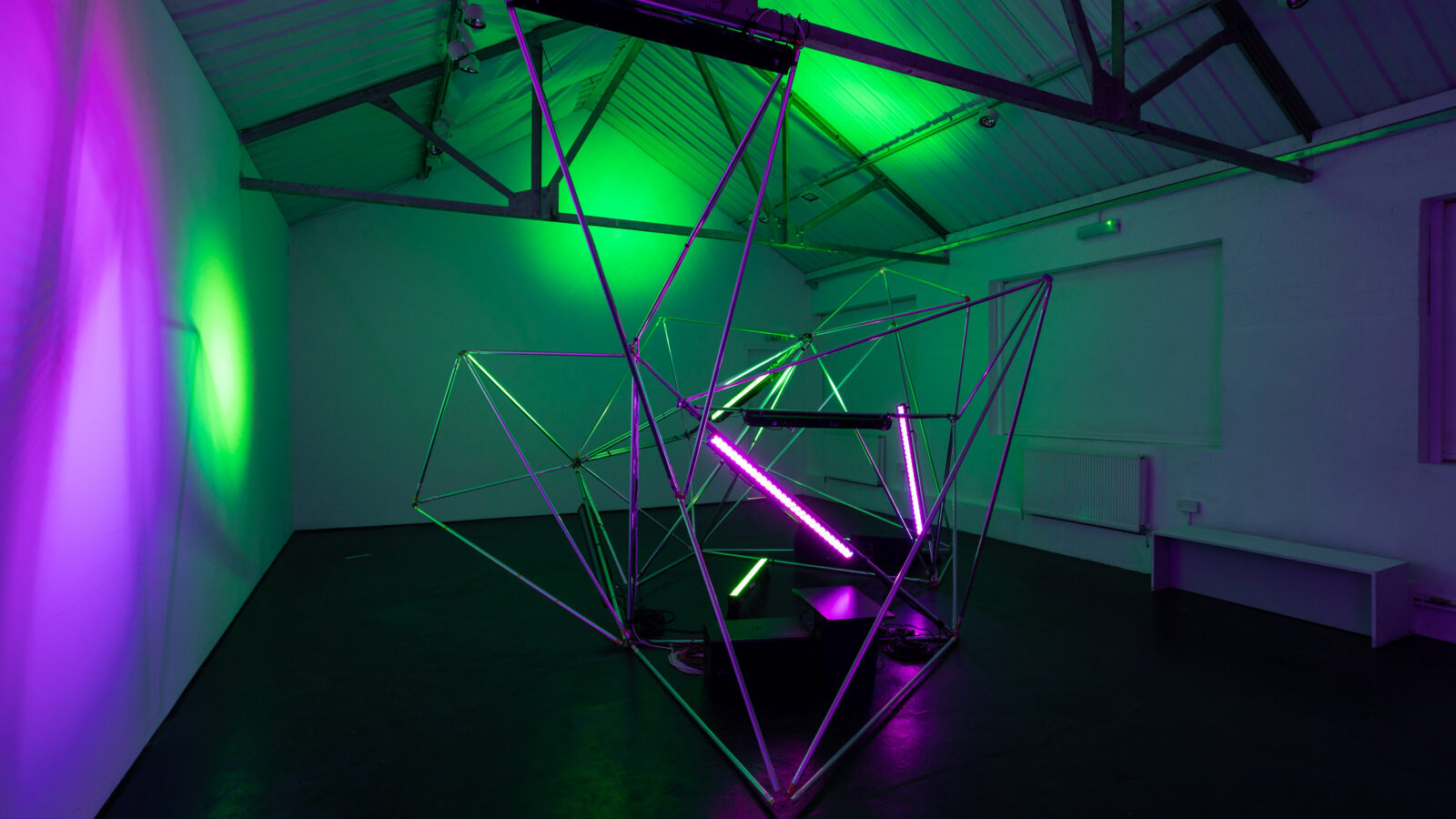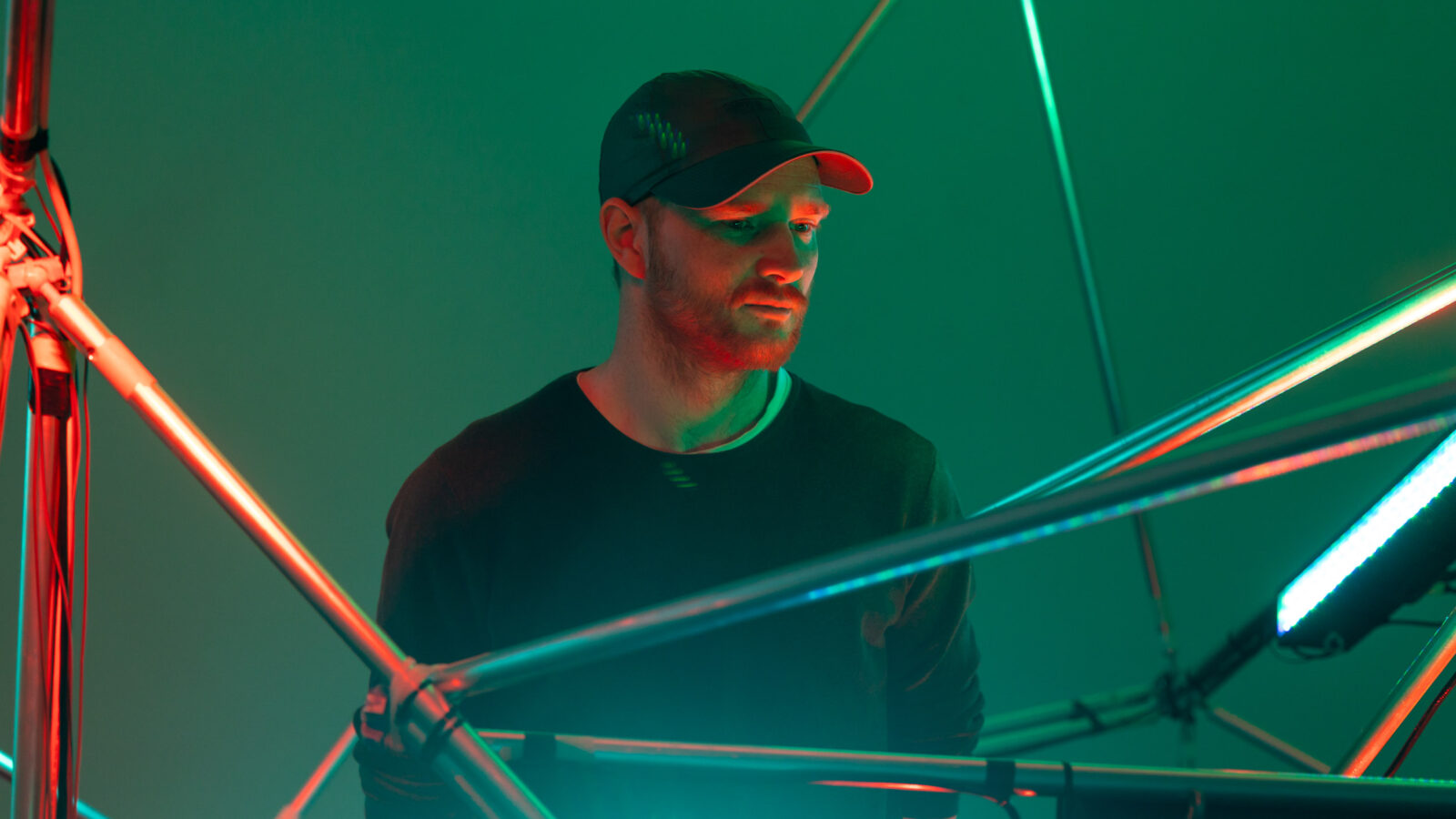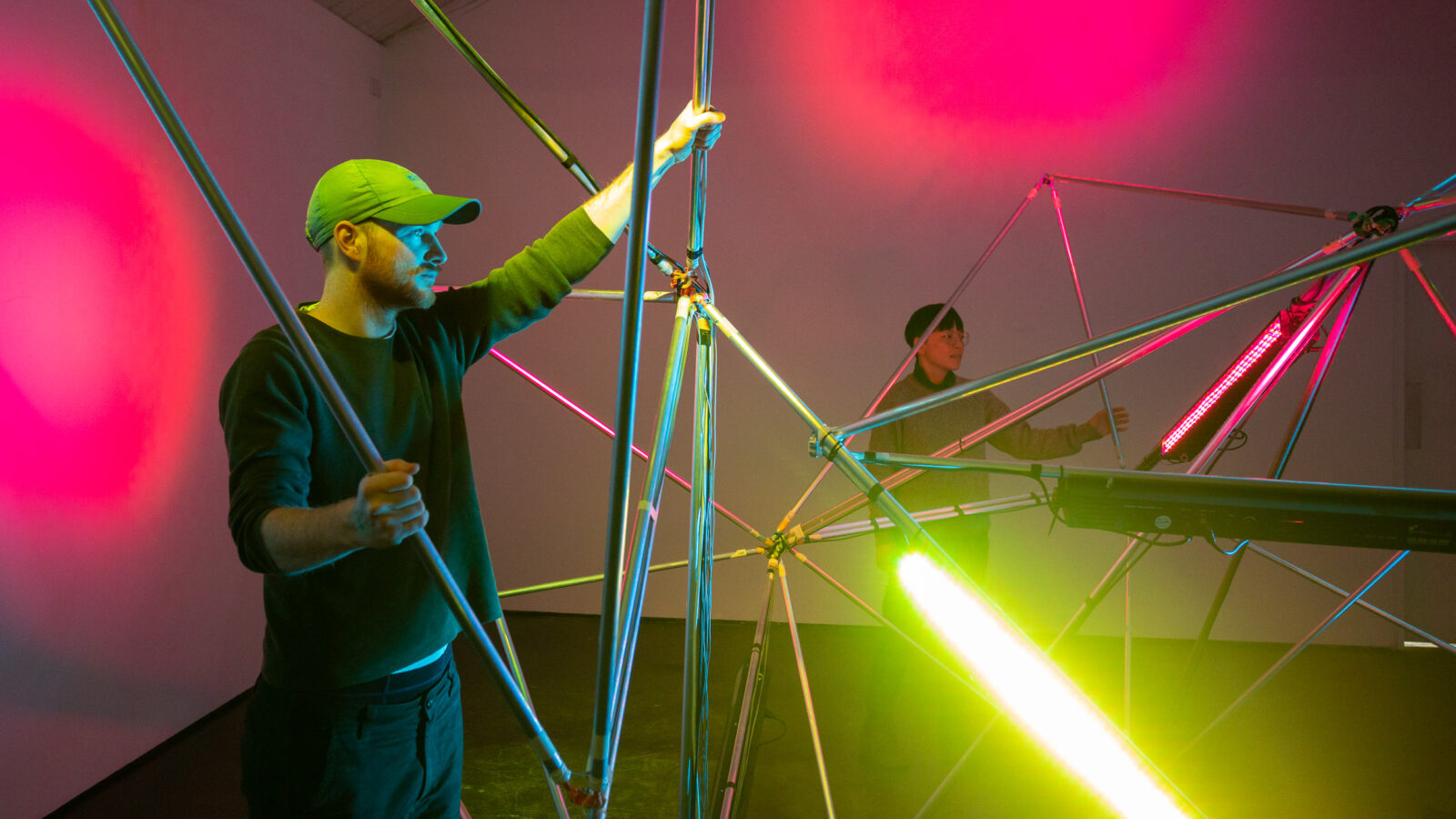“I hate the idea of one person, particularly me, conducting a group”, Rian Treanor tells me during our video call in early July. We’re speaking about his participatory approach to his practice, which primarily involves electronic music and sound art. Our conversation focuses on Cumulative Entanglement (2023), his recent commission at Bloc Projects – even the title of the work indicates the collaborative spirit in which it was made.
When I went to see the work at Bloc Projects earlier this year, I was first presented with its origins. In the gallery entrance, a screen played a video featuring Kathleen Allott, Anne Goss and Mick Gladwin, Treanor’s collaborators who inspired what lay alluringly behind the black curtain separating the lobby from the exhibition space. All three are members of Rotherham Sight and Sound (RSS), a local organisation that provides support to locals with sight or hearing loss. In one scene in the video, a group from RSS sits around a table with Treanor, each using tactile instruments developed by Treanor, to create different electronic sounds. Together they create a unified piece of music. Treanor tells me it is important to him to make things with people that have a personal impact on them. At another point in the video, Kathleen says, “It gives me a freedom that I can actually do something for myself”. Foregrounding the experimentation, autonomy and teamwork involved in developing Cumulative Entanglement and its impact on participants is an apt primer for what follows.
When I lifted the fabric curtain separating the lobby from the exhibition space, I entered a near pitch black room. As my eyes adjusted the lack of light, I could make out a structure in the centre of the space. I put my hand out and edged toward it slowly. Advancing toward the work without expectations or instructions, I suspected that there was a tactile element – something that still feels foreign and almost taboo in a gallery setting. As I neared the structure, I placed my fingertips as gently as possible on the edge of what I could make out. It responded with a loud electronic chime and a neon pink light that illuminated the space. Startled, I jumped back into the shadows where my apprehension quickly transformed into curiosity. I returned with confidence and gripped the same spot again.
I soon realised that the sound and light persisted as long as I maintained contact. On my second approach, I kept my hand on the object long enough to see that I was holding onto a thick metal bar that was connected to several others. Together, they created something akin to a geometric climbing structure found in a school playground. In the centre of the hollow form, there was a black box with a number of wires snaking out from its sides. Along the floor before they joined the bars at the base of the structure. When I touched a neighbouring bar another light, this one green, added more light and another note to the song I was composing. Shortly after, I was joined by another gallery visitor who touched bars on the other side of the form, altering the light and sounds the structure produced. We felt our way around the work, letting go of one bar and grabbing on to another, trying new things and responding to each other while we created a performance of light and sound.
For Treanor, Cumulative Entanglements is the first time a sense other than hearing has been so central to his art. While in previous works, touch played a role, it was mainly practical, allowing him along with collaborators or participants to manipulate the audio generating devices he’d created. However, in the work at Bloc Projects, touch moved beyond the functional to underscore the sense of connection and collaboration his work engenders. For an artist keen on genuinely creating connection, centring with touch makes sense. It allowed gallery visitors to move beyond the expected mode of observation facilitated by sight and sound, to one that truly enable participation, both with the work and the others in the space.
Finding ways of overcoming the isolation brought on by the pandemic inspired the centrality of touch in this work. During Covid, Treanor created a multiplayer music system that people could play online in realtime. The effect of “feel[ing] each other’s presence, connecting in the same space but remotely”, as the artist says, was a salve for the collective separation we endured in that period. Coming out the other end of an event that highlighted the necessity of community, he sought to strengthen it, so that a range of people, with varying perceptive abilities could come together to create a bond they may not have otherwise. He made an instrument and invited us to play it together.
Words by Salena Barry
Images: Documentation images of Cumulative Entanglement. Photos by: Jules Lister Photography, 2023.
About Platform:
Platform is an established artistic development programme at Site Gallery which allows artists to explore new ideas in a public space, testing new thinking and research with engaged audiences. It is funded and supported by the Freelands Artist Programme, a five-year programme that supports emerging artists across the UK in partnership with g39, Cardiff, PS2, Belfast and Talbot Rice Gallery, Edinburgh. For this edition, the exhibition was presented across Site Gallery, Yorkshire Artspace and Bloc Projects.




